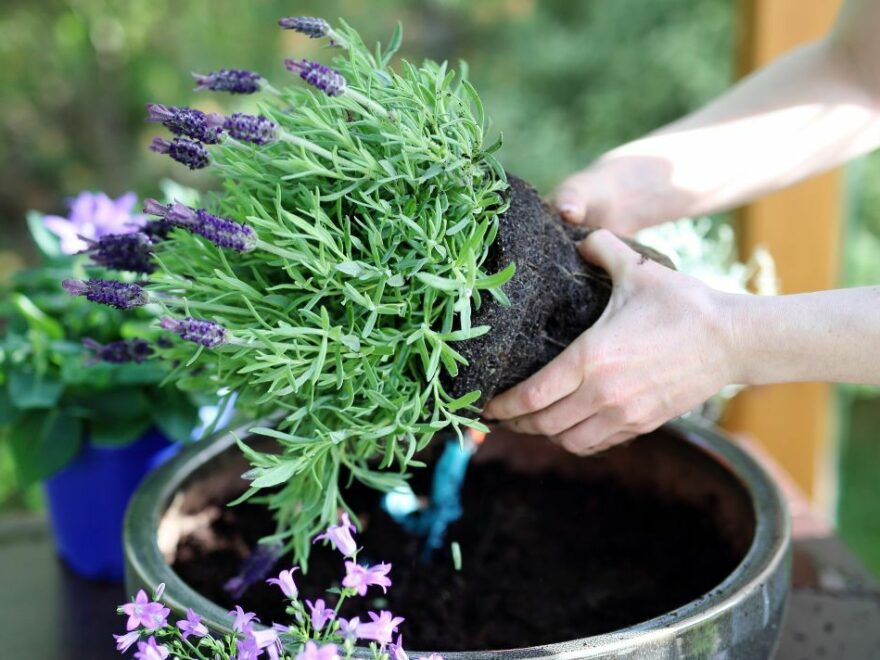Matt James reveals how to pot a lavender plant in 2013
There are many different types of lavender to grow in the UK, offering a range of colours and scents, but the most commonly grown type is English lavender and its hybrids as well as French lavender. The experts at The Royal Horticultural Society (RHS) have shared how to plant lavender in the garden with ease.
They explained: “Lavender is best planted in April or May as the soil naturally warms up and when many fresh plants become available in garden centres.
“Lavender should never be planted in winter when young plants are vulnerable to rotting in cold, wet soils.”
Lavender comes from the Mediterranean so loves the sun, which makes it all the more important to never plant it during the winter months.
When it comes to choosing a position for the plant, they are extremely versatile, and look great in borders as well as containers.

It needs lots of sun and fast-draining soil, so avoid placing it in shady, damp conditions such as corners in the garden.
The RHS added: “It prefers poor, dry or moderately fertile soil, including chalky and alkaline soils. Lavender will not thrive in heavy clay soil or any soil that becomes waterlogged over winter.
“Dig over any free-draining soil and remove the weeds before planting. If your soil is heavy, plant on a 20cm to 30cm mound, ridge or in a raised bed where the roots will not sit in wet soil.
“Lavender is easy to plant and takes just a few minutes, make sure to plant is as soon as possible after buying.
Don’t miss…
I removed stains from outdoor cushions using £1 product in 10 minutes[INSIGHT]
‘I was reported by my neighbours for not mowing my front lawn'[COMMENT]
Hotel housekeeper shares 5 cleaning methods using kitchen essentials[EXPLAINER]
“Space plants about 90cm apart if growing in groups and water regularly, especially in dry weather, for the first season.”
If growing in a container, choose a large one with drainage holes, making sure to use a multipurpose or a loam-based compost such as John Innes No.2.
The RHS recommended mixing in lots of coarse grit or perlite to help improve drainage before planting the lavender so it sits at the same level it was in its previous pot.
Water it well and then water at regular intervals, which tends to be once or twice a week during the summer months.

The experts continued: “Left to their own devices, lavender can become woody and ungainly, so to keep plants compact and attractive, it’s best to trim them annually in late summer, just after flowering has finished.
“Remove any spent flower stalks and about 2.5cm of leaf growth. Foliage can be clipped over in spring if growth is untidy or frost damaged.
“Lavender does not break new growth easily from old stems so don’t cut back into the woody stems.”
Even if pruned regularly, older lavender plants can become straggly, very woody and misshapen, according to the experts.

If this is the case, they are best replaced if you want to keep everything in the garden looking neat and tidy.
Judith Hann, author of Herbs, explained: “The normal advice is to replace plants when they become leggy, usually after three to five years. But I avoid having to do this by cutting right back into the wood. I have not lost a lavender plant yet in the 20 years they have been growing in my garden.”
Although not often recommended, it can be a good way to encourage lavender to grow.
Gardeners should look for some signs of life in the form of growth nodes below the cutting point. If the plant is cut beyond this, the stems may not recover.
Lavender likes soil which is quite low in nutrients, meaning they don’t generally need feeding, so can be quite good low maintenance plants for gardeners.
Source: Read Full Article
